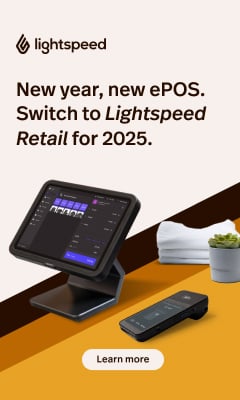Clean up in aisle four: How to prevent your ecommerce picking capabilities from become a CX issue for in-store shoppers
The growing popularity of online grocery is having unintended consequences in stores that have not been thought through, specifically the impact on customers of bad picking processes, says Peter Ward, UK Country Manager at Pricer.
We’ve all been there; the busy supermarket at Christmas and the weekends, aisles jammed with trolleys and generally we accept this because we chose to visit at the busiest times. In fact, it can be all part of the fun of shopping for food. But not all the time.
And when those traffic jams are due to staff stocking shelves or picking for online orders, it can prompt the thought – why am I not the most important person in this store right now? We wanted to see what was going on, first by talking to retailers. In original research of 100 senior UK retailers, two fifths (39%) say they are now facing more pressure on the store to fulfil ecommerce orders, meanwhile a quarter (23%) of store staff polled said they were having to perform more tasks to fulfil ecommerce orders via bricks-and-mortar outlets.
What this all means is store staff are increasingly having to juggle the operational tasks associated with the picking and packing of online orders, as well as managing click-and-collect order points, all while continuing to serve in-store customers and deal with the day-to-day, Business As Usual (BAU) running of the store itself.
Never Miss a Retail Update!For customers this is creating friction. In a further study we undertook among over 1,000 UK consumers, a fifth (21%) felt they received lower levels of customer service in-store because staff were stretched sorting out online orders and collections, rather than focusing on the customers actually in the store. A further 21% also said they had faced delays at the checkout because staff were fulfilling online orders rather than manning the tills.
A third (31%) complained that aisles were cluttered with trollies to fulfil online orders making it difficult for them to get the items they needed, while 20% said they had experiencing low product availability on shelves as store inventory had been used to fulfil online orders, meaning it was unavailable for store customers to buy, creating increased shelf gaps.
Shelf gaps are not only a source of customer dissatisfaction when shopping in-store, but can also impact basket abandonment as well as longer term loyalty. Seven in ten (69%) of consumers expect products to be available on shelf when they go into the store, and almost half (45%) would abandon their entire basket if an item was unavailable, while 63% would question their loyalty to a retailer if they regularly encountered out-of-stocks.
Some years back, it was assumed that this problem would never arise because all online orders would be picked from a warehouse; years later and only Ocado does this. And this is simply because warehouse picking for the mainstream grocers is not profitable, in fact it makes a loss, which would force them to put up delivery charges significantly.
The answer therefore is to automate. Hand-held devices for rapid scanning of electronic shelf-edge labels and pick-to-light technology that identifies the next item in the list can increase pick rates from as few as 25 items an hour to over 140. Not only does this represent a major reduction in labour costs, so critical now as retailers struggle to recruit and retain staff, but more staff are free to spend time with customers in the store and focus on customer service delivery.
Spending time with customers is now a much more important aspect of staff roles; this is not just about what staff are being seen to be doing in store. Customers now need help to navigate increasingly complex issues around diet as it relates to health and preferences, around sustainability and environmental impact. Electronic shelf labels are providing some of this deficit simply because they can display more information that paper labels and that information can be changed instantly based on who is in store. However, these are complementary to rather than a replacement for staff.
Staff who spend more time with customers rather than on repetitive tasks report greater satisfaction with their roles, which is directly linked to them staying in their jobs, according to research by Oliver Wyman, a consultancy, which looked the reasons why employees leave jobs. Employers that design a positive employee experience and supporting work environment hold onto those staff and while pay remains the top driver, it is balanced with other factors, including peer acknowledgement, control of schedules and having a clear purpose in their roles.
Customer service is moving from being something that staff hope to find time to get round to, to something that can actually get done, well and every day. Automation not only removes the drudgery from common tasks it can actually breathe new life into those tasks. Staff in Sweden, where automated picking is big, report that they like the competitive nature of picking and the satisfaction of beating targets. Perhaps, once again, the customer can become the most important person in the aisle.













